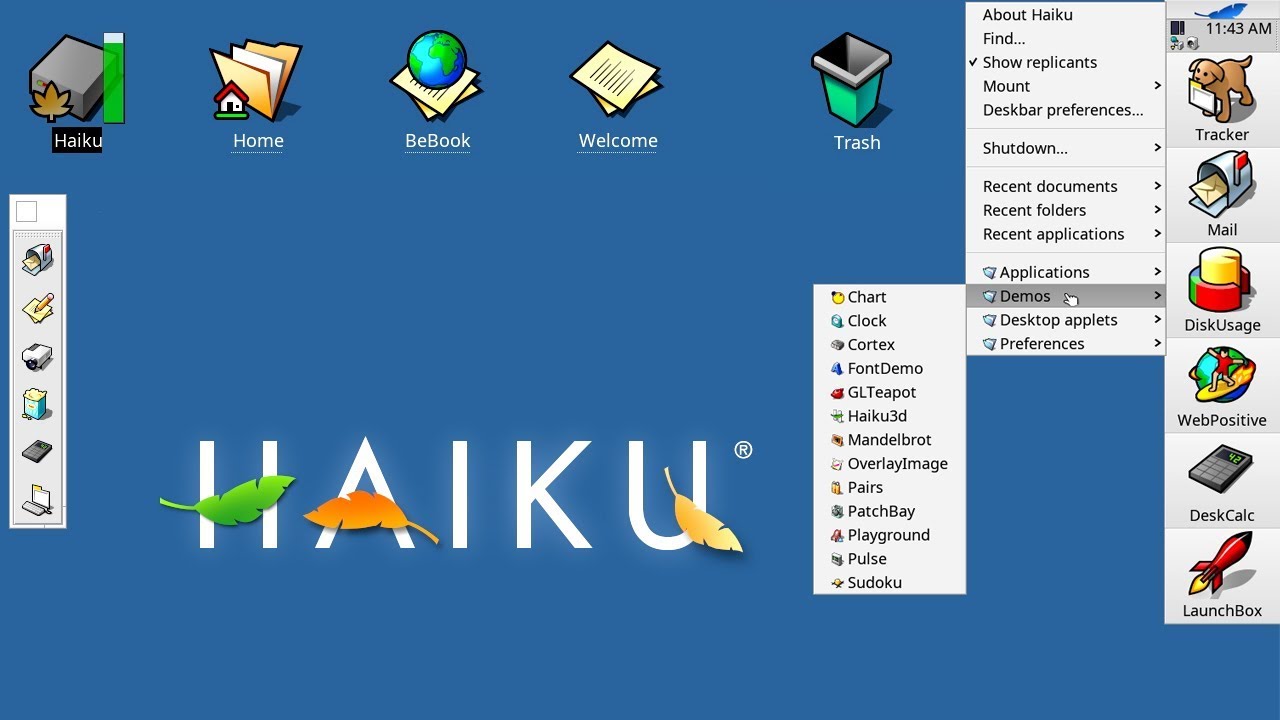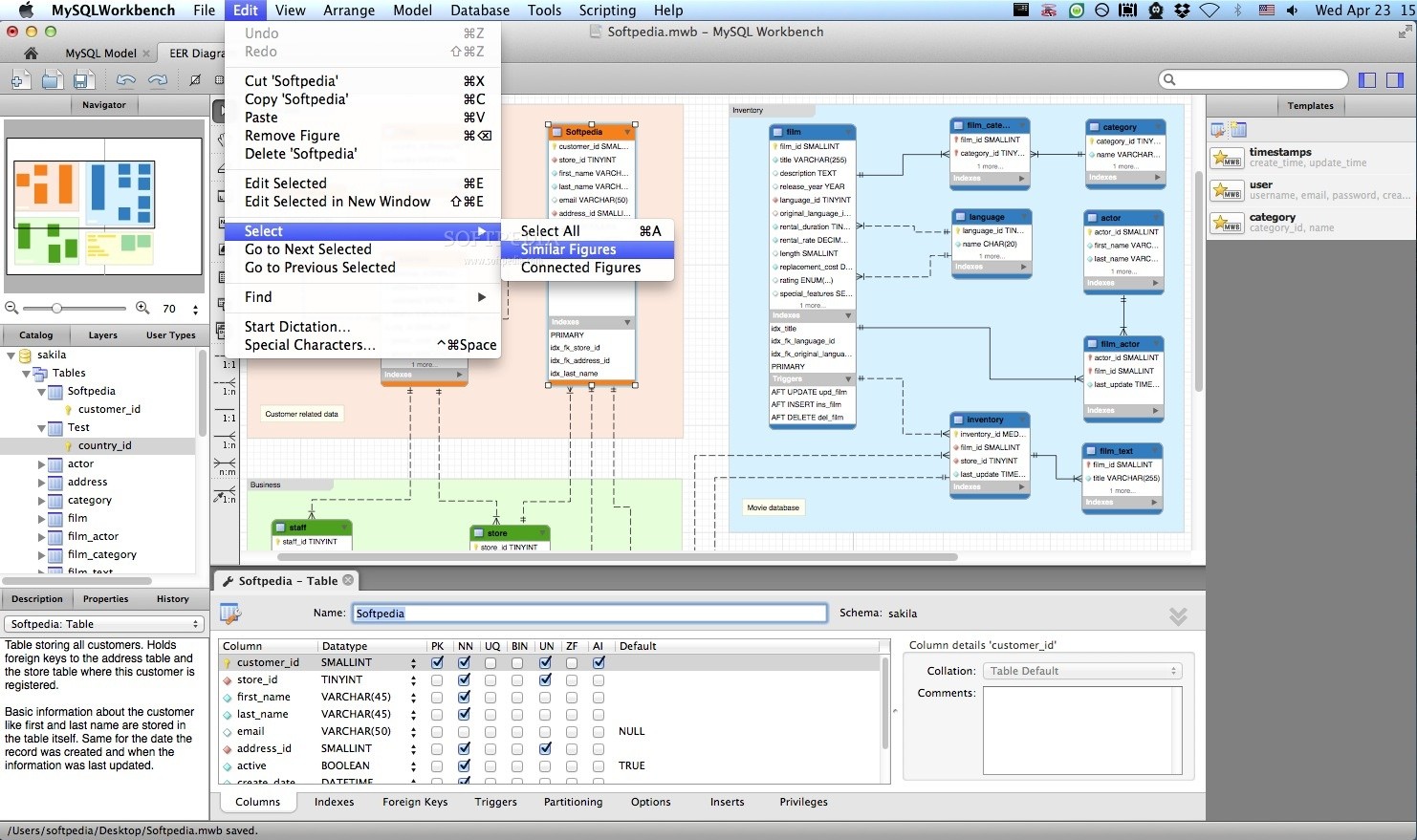The UNIX operating system didn’t just change computing—it spawned an entire ecosystem of variants that shaped the digital world we inhabit today. 🖥️
When Dennis Ritchie and Ken Thompson created UNIX at AT&T’s Bell Labs in the early 1970s, they couldn’t have predicted the revolution their work would trigger. What started as a modest project to create a multitasking, multi-user operating system evolved into a technological phenomenon that influenced virtually every modern computing platform. The story of UNIX variants is one of innovation, competition, collaboration, and the relentless pursuit of computing excellence.
While mainstream discussions often focus on Linux, Windows, and macOS, the history of computing is rich with lesser-known UNIX variants that introduced groundbreaking features and concepts. These hidden gems laid the groundwork for technologies we take for granted today, from network protocols to file systems, from security models to user interfaces.
The Birth of UNIX and Its Philosophical Foundation 🌱
Before diving into the variants, understanding UNIX’s core philosophy is essential. UNIX was built on elegant principles: everything is a file, small specialized programs working together, plain text for data storage, and portability across hardware platforms. These design decisions proved revolutionary and influenced generations of operating systems.
The original UNIX was written in C, a language created specifically for this purpose by Dennis Ritchie. This choice made UNIX remarkably portable compared to operating systems written in assembly language. When AT&T began licensing UNIX to universities and commercial entities in the 1970s, it sparked an explosion of variants, each adapting and extending UNIX for specific needs.
BSD: The Academic Powerhouse That Changed Everything
The Berkeley Software Distribution (BSD) emerged from the University of California, Berkeley in 1977. What started as a collection of add-ons to AT&T UNIX evolved into a complete operating system that introduced features now considered fundamental to modern computing.
BSD’s contributions are staggering. The TCP/IP networking stack that powers the internet? Developed for BSD. The vi text editor beloved by developers worldwide? Created at Berkeley. Virtual memory management systems? BSD pioneered them. The socket API that enables network programming? A BSD innovation.
FreeBSD: The Reliable Workhorse 💪
FreeBSD, one of BSD’s direct descendants, deserves special recognition as a hidden gem. While Linux captured public attention, FreeBSD quietly powered some of the internet’s most critical infrastructure. Netflix’s content delivery network runs on FreeBSD. WhatsApp served 900 million users with just 50 engineers, thanks partly to FreeBSD’s scalability and stability.
FreeBSD’s ZFS file system support offers features that seemed like science fiction when introduced: data integrity verification, snapshots, compression, and storage pool management. The Jails containerization system predated Docker by over a decade, providing secure process isolation and virtualization.
OpenBSD: Security Obsessed and Proud of It 🔒
Theo de Raadt forked OpenBSD from NetBSD in 1995 with a singular focus: security. The project’s motto, “Only two remote holes in the default install, in a heck of a long time,” reflects this obsession. OpenBSD developers conduct comprehensive code audits, implement proactive security measures, and prioritize correctness over features.
OpenBSD gave the world OpenSSH, the secure shell implementation that became the de facto standard for remote system administration. PF (Packet Filter), OpenBSD’s firewall system, influenced firewall design across multiple platforms. LibreSSL, a fork of OpenSSL created after the Heartbleed vulnerability, demonstrated OpenBSD’s commitment to security through code cleanup and modernization.
Commercial UNIX Variants That Powered Enterprises
While BSD variants thrived in academic and research environments, commercial entities developed proprietary UNIX systems that dominated enterprise computing for decades.
AIX: IBM’s Enterprise Giant
IBM’s Advanced Interactive eXecutive (AIX) launched in 1986 and became synonymous with mission-critical enterprise computing. AIX introduced logical volume management, allowing administrators to resize file systems without downtime—a revolutionary capability in the 1980s.
AIX’s Workload Partitions (WPARs) provided application virtualization and resource management years before cloud computing became mainstream. The operating system’s integration with IBM’s POWER hardware delivered exceptional reliability, with systems achieving years of continuous uptime. Financial institutions, airlines, and government agencies relied on AIX for applications where failure wasn’t an option.
Solaris: Sun’s Innovation Engine ☀️
Sun Microsystems’ Solaris (later Oracle Solaris) represented the pinnacle of commercial UNIX development. Introduced in 1992, Solaris combined SunOS’s BSD heritage with System V Release 4 features, creating a powerful hybrid.
Solaris introduced DTrace, a dynamic tracing framework that revolutionized system debugging and performance analysis. Administrators could inspect running systems in real-time without modifying code or impacting performance significantly. ZFS, arguably the most advanced file system ever created, debuted on Solaris, offering features that conventional file systems couldn’t match.
Solaris Zones provided operating system-level virtualization, enabling multiple isolated environments on a single kernel. SMF (Service Management Facility) replaced traditional init scripts with a dependency-based service management system, influencing systemd’s later development on Linux.
HP-UX: Hewlett-Packard’s Reliable Platform
Hewlett-Packard’s HP-UX powered critical infrastructure across industries. Its logical volume manager influenced Linux’s LVM design. HP-UX’s emphasis on high availability through features like cluster file systems and automatic failover made it popular for applications requiring maximum uptime.
The operating system’s integration with HP’s Integrity server hardware delivered exceptional performance for database and enterprise resource planning applications. While less glamorous than some competitors, HP-UX’s reliability made it a foundation for banking systems, telecommunications networks, and manufacturing operations worldwide.
Forgotten Innovators: UNIX Variants You’ve Never Heard Of
Beyond the well-known variants, numerous UNIX systems introduced innovations that influenced computing history despite remaining obscure to most users.
IRIX: Silicon Graphics’ Visual Computing Pioneer 🎨
Silicon Graphics’ IRIX powered the visual effects revolution in entertainment and scientific visualization. Based on System V UNIX, IRIX excelled at 3D graphics and multimedia processing. Films like Jurassic Park and Titanic were created using IRIX workstations.
IRIX introduced XFS, a 64-bit journaling file system designed for parallel I/O and large files. Linux later adopted XFS, where it continues serving as a high-performance option. IRIX’s REACT real-time extensions enabled predictable performance for time-critical applications like flight simulation and medical imaging.
Tru64 UNIX: Digital’s Clustering Pioneer
Originally known as Digital UNIX and later Tru64 UNIX, this variant from Digital Equipment Corporation introduced advanced clustering capabilities. TruCluster allowed multiple systems to share storage and provide transparent failover, concepts that became standard in high-availability computing.
Tru64’s AdvFS (Advanced File System) offered features like file system domains, clone files, and sophisticated storage management. The operating system’s emphasis on 64-bit computing pushed the industry toward larger address spaces years before they became necessary.
MINIX: The Educational System That Sparked Linux 📚
Andrew Tanenbaum created MINIX as a teaching tool for operating systems courses. This microkernel-based UNIX clone was designed for simplicity and clarity, making it perfect for students learning OS concepts.
MINIX’s historical significance extends far beyond education. Linus Torvalds initially developed Linux because MINIX’s licensing restrictions prevented the modifications he wanted. The famous Tanenbaum-Torvalds debate about microkernel versus monolithic kernel architectures influenced operating system design discussions for decades.
Interestingly, MINIX found unexpected modern relevance when Intel incorporated it into the Management Engine present in most Intel processors, making it perhaps the most widely deployed UNIX variant today—running invisibly inside billions of computers.
The UNIX Wars and Standardization Efforts
The proliferation of UNIX variants created compatibility nightmares. Applications written for one UNIX system often required significant modifications to run on another. This fragmentation sparked the “UNIX wars” of the 1980s and 1990s, as vendors competed for dominance while customers demanded standardization.
POSIX (Portable Operating System Interface) emerged as an attempt to standardize UNIX behavior. IEEE developed POSIX specifications defining standard system calls, utilities, and shell behavior. While imperfect, POSIX enabled greater source code portability across UNIX variants and influenced non-UNIX systems like Windows to provide compatibility layers.
The Single UNIX Specification, maintained by The Open Group, formalized requirements for systems claiming UNIX branding. This certification process ensured baseline compatibility across certified systems, though it couldn’t eliminate all differences between variants.
Technical Innovations That Changed Computing Forever 🚀
UNIX variants collectively introduced innovations that became computing fundamentals:
- Hierarchical File Systems: The directory tree structure we take for granted originated with UNIX, replacing flat file systems common in earlier operating systems.
- Pipes and Filters: The ability to connect program output to program input revolutionized command-line productivity and influenced modern stream processing.
- Shell Scripting: UNIX shells transformed system administration by enabling automation through scripts, a concept now extended to modern configuration management tools.
- Networking Stacks: BSD’s TCP/IP implementation became the foundation for internet connectivity across all modern operating systems.
- Security Models: UNIX permissions systems, while simple, established concepts of users, groups, and access controls that influence security design today.
- Process Management: UNIX’s process model, including fork/exec paradigms and signals, influenced operating system design across platforms.
The Legacy Lives On: UNIX DNA in Modern Systems
Walk through any data center today, and UNIX’s influence is unmistakable. Linux, technically not UNIX but UNIX-like, dominates server infrastructure, powering the cloud computing revolution. macOS and iOS derive from BSD UNIX, bringing UNIX to hundreds of millions of consumer devices. Android’s Linux kernel means billions of smartphones carry UNIX DNA.
Modern container technologies like Docker and Kubernetes build on concepts pioneered in BSD Jails and Solaris Zones. DevOps practices rely on tools and philosophies rooted in UNIX automation capabilities. Programming languages like Python, Ruby, and Go embrace UNIX philosophies of simplicity and composition.
Why These Hidden Gems Matter Today 💎
Understanding UNIX variants isn’t just historical curiosity—it provides practical benefits for modern technologists. Many enterprise systems still run commercial UNIX variants, requiring administrators who understand their unique features. Legacy applications worth millions rely on these platforms, and organizations need expertise to maintain and migrate them.
More importantly, UNIX variants introduced solutions to problems that remain relevant. ZFS’s data integrity features address concerns about bit rot in modern storage systems. DTrace’s tracing capabilities influenced modern observability tools. BSD security practices inform current software development methodologies.
These systems demonstrated that different design choices produce different tradeoffs. OpenBSD’s security-first approach sacrificed some compatibility for enhanced protection. Solaris optimized for massive scalability at the cost of complexity. FreeBSD focused on performance and stability. Understanding these tradeoffs helps modern architects make informed decisions about technology selection.
Lessons From the UNIX Revolution 📖
The UNIX story teaches valuable lessons about technology evolution. Open collaboration, exemplified by BSD’s academic development, accelerated innovation beyond what any single entity could achieve. The importance of simplicity and elegance—UNIX’s core philosophy—proved more durable than complex, feature-laden alternatives.
Portability matters. UNIX’s architecture enabled adaptation across wildly different hardware platforms, from microcomputers to supercomputers. This flexibility extended its relevance far beyond the minicomputers it originally targeted.
Standards enable ecosystems. Despite the UNIX wars’ chaos, standardization efforts like POSIX created enough compatibility for a vibrant ecosystem of portable applications and tools. The balance between standardization and innovation remains a challenge in modern platform development.
Preserving Computing History and Looking Forward 🔮
Many UNIX variants face uncertain futures. Commercial UNIX systems are declining as organizations migrate to Linux and cloud platforms. However, their innovations persist, incorporated into modern systems or inspiring new approaches to old problems.
Preserving this history matters. The Computer History Museum and similar organizations archive old hardware and software, enabling researchers to study these systems. Open-source projects maintain legacy UNIX code, keeping knowledge accessible to future generations.
Looking forward, UNIX principles remain relevant even as computing evolves. Edge computing, IoT devices, and serverless architectures all benefit from UNIX’s emphasis on modularity and simplicity. The philosophy of small, composable tools aligns perfectly with microservices architectures.
The next computing revolution will undoubtedly introduce new paradigms, but it will build on foundations laid by UNIX and its variants. Understanding where we’ve been helps us appreciate where we’re going and avoid repeating past mistakes.
These hidden gems of computing history—from BSD’s networking innovations to Solaris’s advanced file systems, from AIX’s enterprise reliability to MINIX’s educational impact—collectively transformed computing from a specialist pursuit into the ubiquitous technology shaping modern life. Their legacy endures not just in code but in the principles and practices that guide how we build, secure, and operate computing systems today. The UNIX revolution may have started in a Bell Labs research lab, but its impact resonates through every server room, data center, and pocket-sized supercomputer we carry daily. 🌟
Toni Santos is a visual historian and creative artisan whose work channels the bold spirit of the steam-powered era—a time when imagination, mechanics, and ambition converged to reshape the modern world. Through richly detailed visual narratives and handcrafted design, Toni celebrates the legacy of steam innovation as both an artistic and technological revolution.
Driven by a passion for mechanical aesthetics, forgotten inventions, and industrial-age ingenuity, Toni reimagines the world of steam through illustrations, tactile artifacts, and storytelling that capture the poetry of pressure, motion, and invention. From piston-driven engines to brass-detailed diagrams, each piece reveals how steam wasn’t just power—it was promise.
With a background in visual design and historical research, Toni brings a craftsman’s eye and a dreamer’s heart to the stories of tinkerers, inventors, and visionaries who shaped the 19th century. His work doesn’t merely document machines—it honors the culture, courage, and creativity that drove a world to reimagine itself through gears, valves, and vapor.
As the creative voice behind Vizovex, Toni shares curated articles, reconstructed blueprints, and visual interpretations that bring this industrial past to life. His collections serve as a tribute to:
The elegance of steam-era design and innovation
The human stories behind great mechanical feats
The aesthetic beauty found in function and form
The echo of invention in today’s creative world
Whether you’re a history lover, a fan of steampunk, or an admirer of antique technology, Toni welcomes you into a world where art and machinery fuse, one cog, one drawing, one rediscovered marvel at a time.





